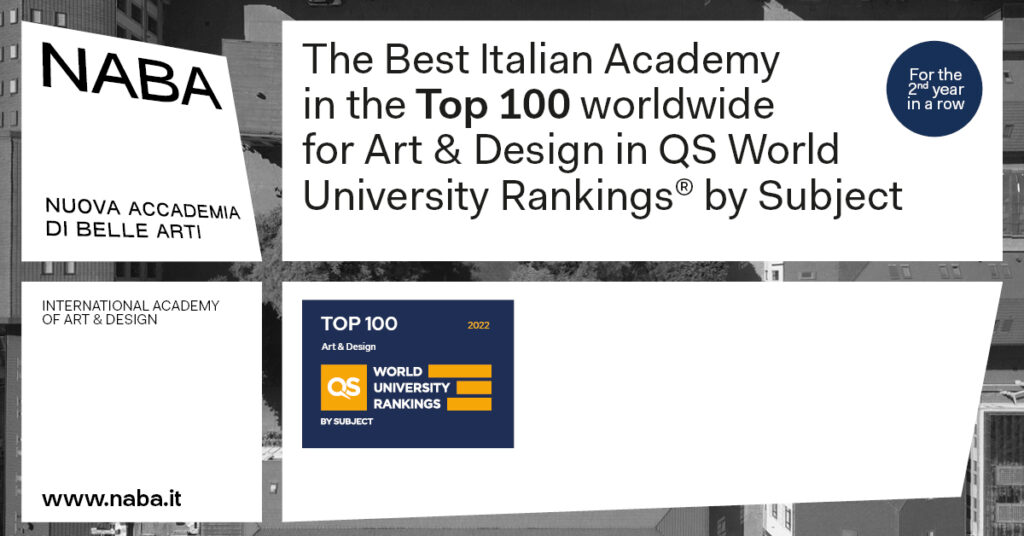
QS World University Rankings® by Subject 2022: NABA among the top 100 universities in world in the Art & Design field
For the 2022 edition and for the second year in a row, QS World University Rankings® by Subject named NABA as the first and only Italian Academy of Fine Arts among the 100 best universities in Art & Design field. This achievement confirms the excellence of NABA’s distinctive didactic methodology, revolving around a strong vocation for research and for the constant relationship with the artistic and professional context.
The most accredited international universities ranking: value and criteria
QS World University Rankings® by Subject is the most accredited international universities ranking. It provides a comparative analysis of the performance of about 1,543 institutions through 88 different places in the world, across 51 academic disciplines divided into 5 subject areas.
For the Art & Design Subject, the criteria used in this rigorous and independent comparative analysis are Academic Reputation and Employer Reputation. The first and most influential metric takes into account the global academic community’s appreciation of universities through the QS Academic Survey. This is currently the most extensive global survey of academic staff evaluations. The second criterion, Employer Reputation, assesses universities’ ability to train talented and competent graduates ready to begin their professional careers. In this case, the analysis considers the opinions of HR managers from around the world.
Guido Tattoni (NABA Dean) commented: “We are proud to be named by the prestigious QS World University Rankings® and to be among the 100 best universities in the world for Art & Design Subject also this year. Thanks to qualified academic staff and all the people effortlessly working for the Academy in Milan and Rome, this result has been possible. This relevant achievement motivates us to do better and better. Our aim is to stay updated on new issues of contemporary society and explore all the possible scenarios of actual and future working environment“.
